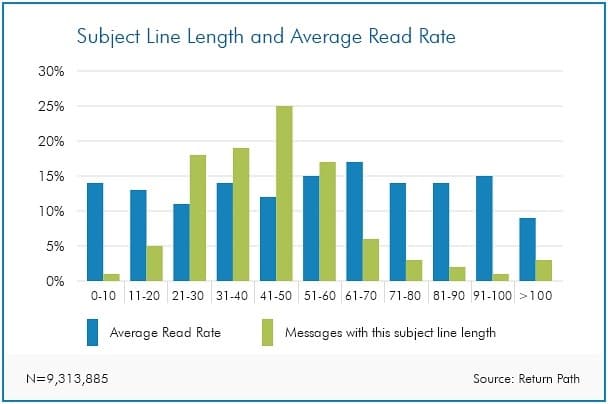Becca Chandler
Becca Chandler is a Marketing Content Specialist. Becca writes for sales and marketing blog. In her free time, Becca likes to travel and capture special moments with her camera
Are you ready to improve your email marketing campaigns? Separate fact from fiction with the following tips and tricks to solve the five most common email marketing misconceptions.
The online marketing world contains an abundance of conflicting information about email marketing. Because of this, it’s not always easy to tell fact from fiction. As of misinformation spreads, marketers must be wary of common email marketing myths that can hinder their long-term growth.
In today’s blog post, we’ll explore five commonly held myths about email marketing and reveal the truths behind them. Keep reading if you’re ready to stop these myths from undermining your email marketing success!
If you’ve worked in marketing for any length of time, someone somewhere has likely told you to keep your subject lines short.
This tactic is popular for several reasons—short subject lines are thought to grab subscribers’ attention quickly and to work best on smaller mobile screens, which typically only display the first 35 characters or so.
Yet, research reveals shorter isn’t always better. In fact, one study found that subject lines on the longer side –61 to 70 characters–had the highest average read rate at 17% (source).

Here’s the thing: short subject lines can’t always get your message across. And, if your subject line and email copy don’t align, recipients may feel misled, leading them to click out and move on with their day.
Longer subject lines, on the other hand, tend to have higher click-through rates as they offer more explaining what the reader can expect.
So we say experiment with longer subject lines. A/B test different lengths to see how they impact key email performance metrics. You shouldn’t swear off brief subject lines altogether—but make sure you recognize when an email calls for more details and when you can afford to drop a few characters.
Many email marketers panic when they see a spike in unsubscribes. But the truth is opt-outs can help you create a cleaner email list. Think about it: When someone unsubscribes, your list loses someone who is unlikely to buy from you or engage with your emails.
An opt-out means your future marketing emails will reach more actively engaged subscribers. So while your subscribers may temporarily decline, your engagement rates and click-throughs should rise.
Don’t rely solely on opt-outs to maintain a clean email list. Be sure to make ongoing data hygiene a standard practice in your business.
You’ve likely heard this one before —you may even have a list of common spam words printed at your desk as a reminder. Yet, spam words don’t affect email deliverability as much as they once did.
Internet Service Providers (ISPs) now have advanced spam filters that look beyond trigger words. They assess emails based on more specific factors like user engagement and sender reputation. If you’re not convinced, consider the statistics:
Of course, we aren’t advocating that you fill your email subject lines with all of your previously banned spam words. But don’t be afraid to use one if the situation calls for it. If you have a free e-book to offer customers, don’t be afraid to let them know.
Some marketers incorrectly assume branded HTML emails will outperform plain-text ones. Even though one might assume the visual elements of an HTML email capture attention more effectively, recent data shows just the opposite. When HubSpot tested the impact of plain-text vs. HTML emails, they found HTML templates reduce both open rates and click-through rates (source).


Check out the final numbers for yourself:
So, while you might be tempted to build an eye-catching marketing email with all the bells and whistles, sometimes simple is better.
Creativity is important—but shouldn’t outweigh the basic best practices of email marketing. You must still carefully consider email copy, subject line, call-to-action, and link placement.
Studies show Tuesday is the best day to send marketing emails, followed closely by Thursday and Wednesday (source). The weekend may seem like the worst time to send business emails—but that’s often not the case.
It’s not uncommon for business professionals to check their inboxes and respond to emails on the weekend. And, with fewer marketing emails going out on Friday, Saturday, and Sunday, your emails have a better chance of standing out in a marketer’s otherwise crowded inbox.
You should still send most of your emails during the work week—but test a few weekend emails to see how your audience responds.
Email continues to be a go-to channel for modern marketers. But, several myths continue to make their way into the marketing world and steer email marketers in the wrong direction.
Don’t let the wrong advice prevent you from making decisions that can benefit your marketing ROI in the long run. Step outside the box and build a strategy that aids your future business growth—not one that conforms to the inaccurate email marketing myths of the past.
You’ll also receive some of our best posts today

Becca Chandler is a Marketing Content Specialist. Becca writes for sales and marketing blog. In her free time, Becca likes to travel and capture special moments with her camera

Mobile devices have become an integral part of our lives in this digital...
Don’t miss the new articles!